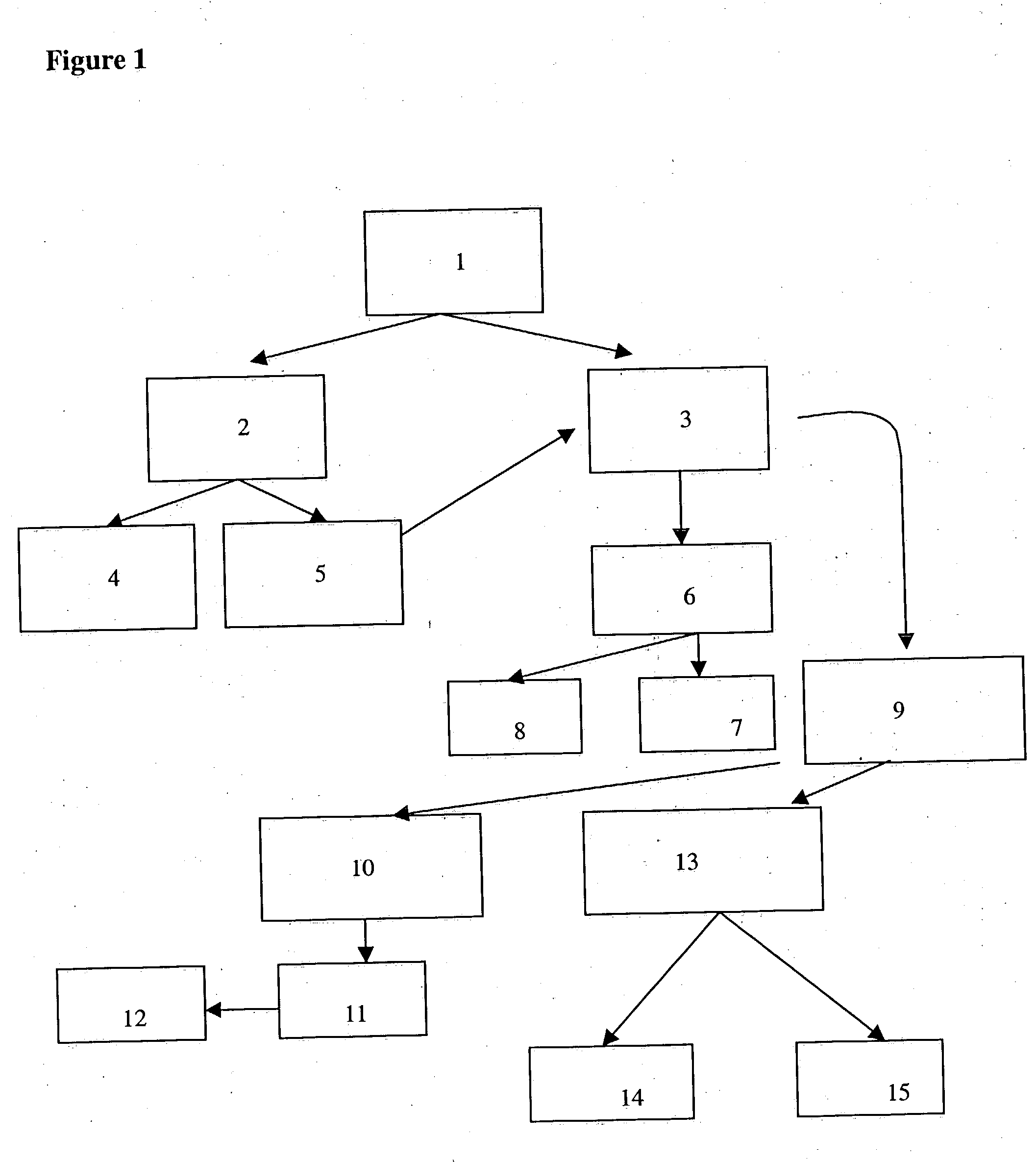Process for the production of plant ingredients
a technology of plant ingredients and processing equipment, which is applied in the direction of vegetable seeds, animal feed stuff, fodder, etc., can solve the problems of cumbersome process implementation, inability to meet the flavour and colour profiles of extracted plant components, and limited use of components, etc., to achieve low microbiological load, high functionality, and light colour
- Summary
- Abstract
- Description
- Claims
- Application Information
AI Technical Summary
Benefits of technology
Problems solved by technology
Method used
Image
Examples
example 1
500 g of lupin flour is mixed with 2-5 litres of water, stirred in a tank with mild agitation, and the pH raised by addition of sodium hydroxide to a pH between 8 and 10. The mixture is agitated for a period of 30 minutes to 2 hours at ambient temperature (25° C.). The mixture is then centrifuged at 6000 g for 10 minutes to recover a fibre containing pellet.
The fibre containing pellet is washed with 700 ml of water and recentrifuged. The fibrous pellet is then dried and reserved for later processing for recovery of sugars, pectins and other carbohydrate components.
The water wash is added to the first supernatant, and the pH adjusted to between pH 3 to 5 with acid (hydrochloric or phosphoric acid). The resulting acidified composition was centrifuged at 6000 g, and a protein fraction (PF1) recovered. PF1 is adjusted to 5 to 6.5 with alkali, ethanol washed, and dried to remove ethanol, for example by spray drying or rotary evaporation, to give a proteinaceous powder.
The resultin...
example 2
Application of the lupin protein of Example 1.
Ingredients%Maltodextrin36Water39.6Lupin protein extract PF31.8Fat21Emulsifier0.6Dipotassium phosphate1
Procedure:
Premix water protein and dipotassium phosphate and heat to 50C.
Add maltodextrin and heat to 65C.
Add fat and emulsifier and heat to 85C
Emulsify using twin screw homogeniser and spray dry
Continental Frankfurt
Ingredients%Mutton (90% lean)15Pork trimmings (50% lean:50% fat)36.44Pork fat11Ice water27.3Potato starch4Lupin protein isolate, or lupin protein extract PF12.8Salt2Frankfurt flavour concentrate0.3Smoke flavour0.5Sodium tripolyphosphate0.5Sodium erythorbate0.1Sodium nitrite0.02Sodium metabisulphite0.04
Procedure
1. Mince chop together approx 30% ice plus lupin protein isolate.
2. Add fat and remaining ice water-chop to form a smooth creamy fat emulsion (approx 60 sec).
3. Add meat, continue chopping (approx 30-60 sec).
4. Add salt, phosphate, sodium nitrite, sodium erythorbate and cut until temp 5C.
5. A...
example 3
Performance tests on lupin protein emulsification and foaming.
1. Emulsification Test
1. Take 7 gm of lupin protein.
2. Add 100 mls of water.
3. Mix in the omni mixer at 5000 rpm for 10 seconds.
4. Add 100 mls of canola oil and mix for 1 minute.
5. Measure the viscosity in the Brookfield viscometer with spindle 3 at 5 rpm
6. Take 40 g of the emulsion.
7. Centrifuge at 3000×g for 10 minutes.
8. Measure the height of the emulsified layer (A) and the total height in the tube (B).
9. Emulsifying activity is measured as A / B*100.
2. Whipping test
1. Take 5 gm of sample as is
2. Add 100 mls of water
3. Whip for 5 min in kenwood mixer.
4. Pour the contents in a 1000 ml, clear measuring cylinder.
5. Measure the total height including the foam.
6. Let the foam stand for 30 minutes.
7. Measure the volume of foam alone and the amount of liquid drained at the bottom of the foam.
Foam Volume expansion is calculated as: Total volume-initial volumeInitial volume×100.
PUM
 Login to View More
Login to View More Abstract
Description
Claims
Application Information
 Login to View More
Login to View More - R&D
- Intellectual Property
- Life Sciences
- Materials
- Tech Scout
- Unparalleled Data Quality
- Higher Quality Content
- 60% Fewer Hallucinations
Browse by: Latest US Patents, China's latest patents, Technical Efficacy Thesaurus, Application Domain, Technology Topic, Popular Technical Reports.
© 2025 PatSnap. All rights reserved.Legal|Privacy policy|Modern Slavery Act Transparency Statement|Sitemap|About US| Contact US: help@patsnap.com


